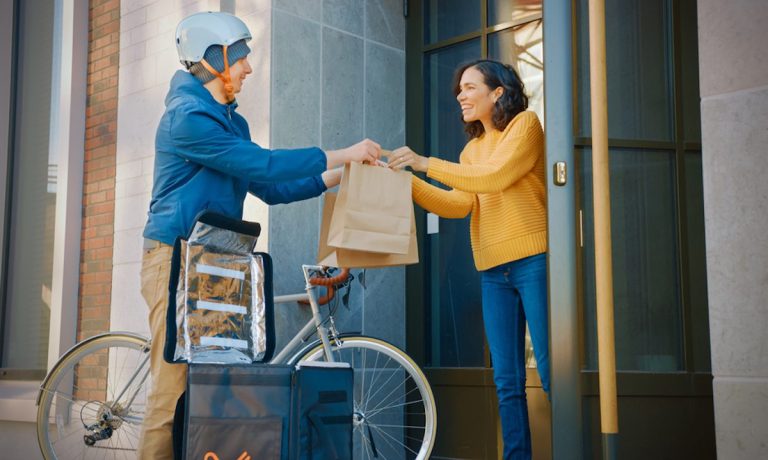
While the best-case scenario for restaurants might involve all of their sales coming through their own direct ordering channels, ongoing labor challenges often make it so that the pros outweigh the cons when it comes to using third-party aggregators.
Take quick-service restaurant (QSR) giant Yum Brands, for example. The parent company of KFC, Pizza Hut, Taco Bell and The Habit Burger Grill, has found that these delivery marketplaces are essential right now to meeting outsized demand for delivery. It’s a reality executives addressed in a call with analysts Wednesday (Nov. 2) as they discussed the company’s third-quarter 2022 earnings results.
“The addition of aggregators has been one part of solving the delivery capacity challenge that we mentioned earlier in the year,” Yum Brands Chief Financial Officer Chris Turner told analysts. “We talked [previously] about how we view this more as a capacity challenge than a demand challenge. And we’ve used our relationships with the aggregators, both being on their platforms and working with them on Delivery-as-a-Service, as one mode to solve that.”
Turner noted that these aggregators have helped Pizza Hut meet demand at peak hours, freeing up restaurant employees’ time to focus on other tasks, and that the aggregators’ marketplaces have helped draw in additional customers.
Additionally, CEO David Gibbs noted that 90% of the Pizza Hut U.S. system is available via third-party delivery marketplace, and that this embracing of aggregators has contributed to “meaningful improvement” in the brand’s “trends on delivery sales,” leading to “good, strong growth around the world.”
This strategy marks a key point of difference from competitor Domino’s Pizza, which has maintained a strong anti-aggregator stance despite ongoing capacity challenges, which have improved somewhat from the first half of the year, but which nonetheless are an ongoing source of difficulty.
“[M]y confidence in our ability to solve many of our delivery labor challenges ourselves has grown over the past few quarters,” CEO Russell Weiner told analysts on an earnings call last month. “While we still have work to do to get back to our highest standards for delivery service, I am encouraged by the progress we’ve made so far.”
Granted, the pizza segment is highly reliant on delivery. Brands that focus on other kinds of food are finding that the drawbacks of the aggregator model are more apparent in this time of rapid inflation. Take, for instance, Brinker International, parent company of casual dining brands Chili’s Grill & Bar and Maggiano’s Little Italy, in addition to two virtual brands.
On a call with analysts Wednesday discussing the company’s first-quarter fiscal year 2023 earnings results, Brinker CFO Joe Taylor shared that “increases in delivery fees” have been driving up restaurant expenses. Additionally, CEO Kevin Hochman noted that “some of that — well, a lot of that” came from the brand’s expansion of its third-party delivery aggregator availability and of its virtual brands.
Yet, demand for delivery remains. Research from the July edition of PYMNTS’ ConnectedEconomy™ series, “The ConnectedEconomy™ Monthly Report: The Rise of the Smart Home,” which drew from a May survey of more than 2,600 U.S. consumers, found that 43% order food for same-day delivery from aggregators every month. Plus, more than half of those aggregator customers make purchases once a week or more.
Consequently, for all these challenges, the company is continuing to invest in delivery, looking to improve the consumer experience of the channel.
“We’ve structured our organization to be more deliberate about improving the off-premise experience end to end, removing friction for both guests and team members, and optimizing food quality for takeout and delivery,” Hochman said. “We believe this focus will accelerate the growth of this important part of our business.”